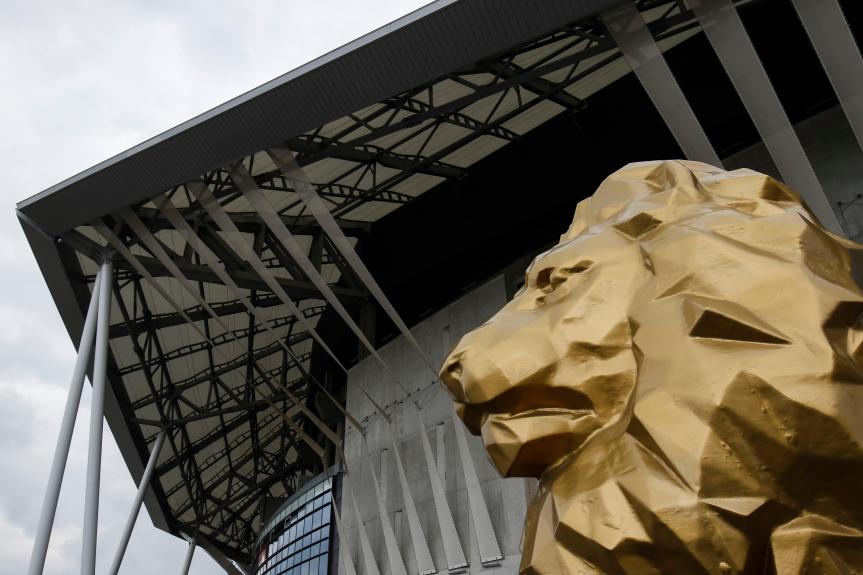FOOTBALL fans, despite the presence of billionaire benefactors, hedge funds, private equity firms and nation states, still believe they are the spiritual owners of their clubs. It is one of the great delusions of the football experience. Once a club passes into the free market, it is no longer the property of the people that pay to watch the team. They become customers who either buy into the process or they don’t.
If that isn’t hard enough for fans who still hanker for the flat-capped working class game that effectively died in the 1980s, we have moved into an age where football clubs are an asset class that can form part of an investment portfolio. Once that happens, the gap between the spiritual owners and the real owners becomes even wider and even more inaccessible. The idea that an owner can be running a club from a high rise in Manhattan or San Francisco is unthinkable.
Multi-club ownership is on the increase and the fans are deeply suspicious of its intentions. While it represents the new reality, it makes most supporters very uncomfortable because they see their club being treated as an asset rather than an organic body. The average man on the terrace in the 1970s and 1980s knew that their club was propped-up by a local businessman who funded their Saturday pastime – people like Bob Lord, Louis Edwards and the Moores family – but they were, in most cases, cut from the same cloth. The average club chairman (no-one was ever called an owner), was invariably from the neighbourhood and had “made good”. Today’s owners are, very often, anonymous figures who live on the other side of the planet.
So when that owner has more than one club, the discomfort intensifies as the perception is the club is merely a line on a spreadsheet. It isn’t like that, in all probability, but fans want owners to feel the same emotional extremes that come with following the team. It is difficult do when you’re sipping a cocktail in the Cayman Islands, Martha’s Vineyard or on a yacht moored in Marbella.
The most publicised multi-club models are the City Football Group and Red Bull, but there are other, less noisy versions. At the World Football Summit in Seville, the subject of multi-club owners was discussed. One aspect that emerged was the difficulty of running such a model and the complications that come with a multi-club structure. There has to be a strategy and some cohesion between the various parts of the model. Some investors feel that “planting flags” is enough to build a portfolio, but understanding the culture of the component clubs is vital. This doesn’t work when owners are absent from the scene. In Europe, fans like to see the owner is attentive. “US owners should spend more time with their clubs,” said one member of the World Football Summit panel in Seville.
There are good owners and bad owners; the Friedkin family at Roma was considered to have been successful in understanding their club, but others that believe running a soccer club is akin to operating a US sports club are mistaken. US investors with a high focus on data believe analytics can bring them advantages, but they often overlook how lacking in simplicity football can be. Owners also make the mistake of sweeping away the people who have been involved with the club but then bring new personnel into a tense environment. The tactics of Wall Street companies are totally unsuitable for the world of football.
| Clubs | Countries | |
| City Football Group | 12 | 12 |
| Red Bull | 6 | 4 |
| David Blitzer | 8 | 7 |
| John Textor | 4 | 4 |
| Pacific Media Group | 5 | 5 |
| 777 Partners | 9 | 9 |
Football fans need to know that their club, if it is part of a portfolio, is given the attention it needs, be it financial support, long-term strategic thinking and the right partners and management. There are advantages in being part of a broader network, such as the exploitation of commercial synergies, the possibility of sharing best practices and the cross-fertilisation of talent. This all sounds like a million miles from the old image of the game, but it is all very 21st century. Ultimately, those that see a club as an important part of their life need certain guarantees: are the owners/investors in it for the long haul?; is the financial model stable, transparent and sustainable?; how independent is the club from the multi-club structure?; and are the benefits two-way?.
The modern football landscape is a very different paradigm, but there are only so many willing billionaires who wish to be involved. Therefore, the multi-club model enables investors to enter the market on a smaller scale, allowing them to hedge their bets. At the top end, the City Football Group is different in that their flagship is Manchester City, but lower down, much smaller clubs can be part of a structure. Whether we like it or not, there’s every reason to expect this to continue and grow far bigger, but essentially, any group has to be very clear why they are building a portfolio of football teams.

